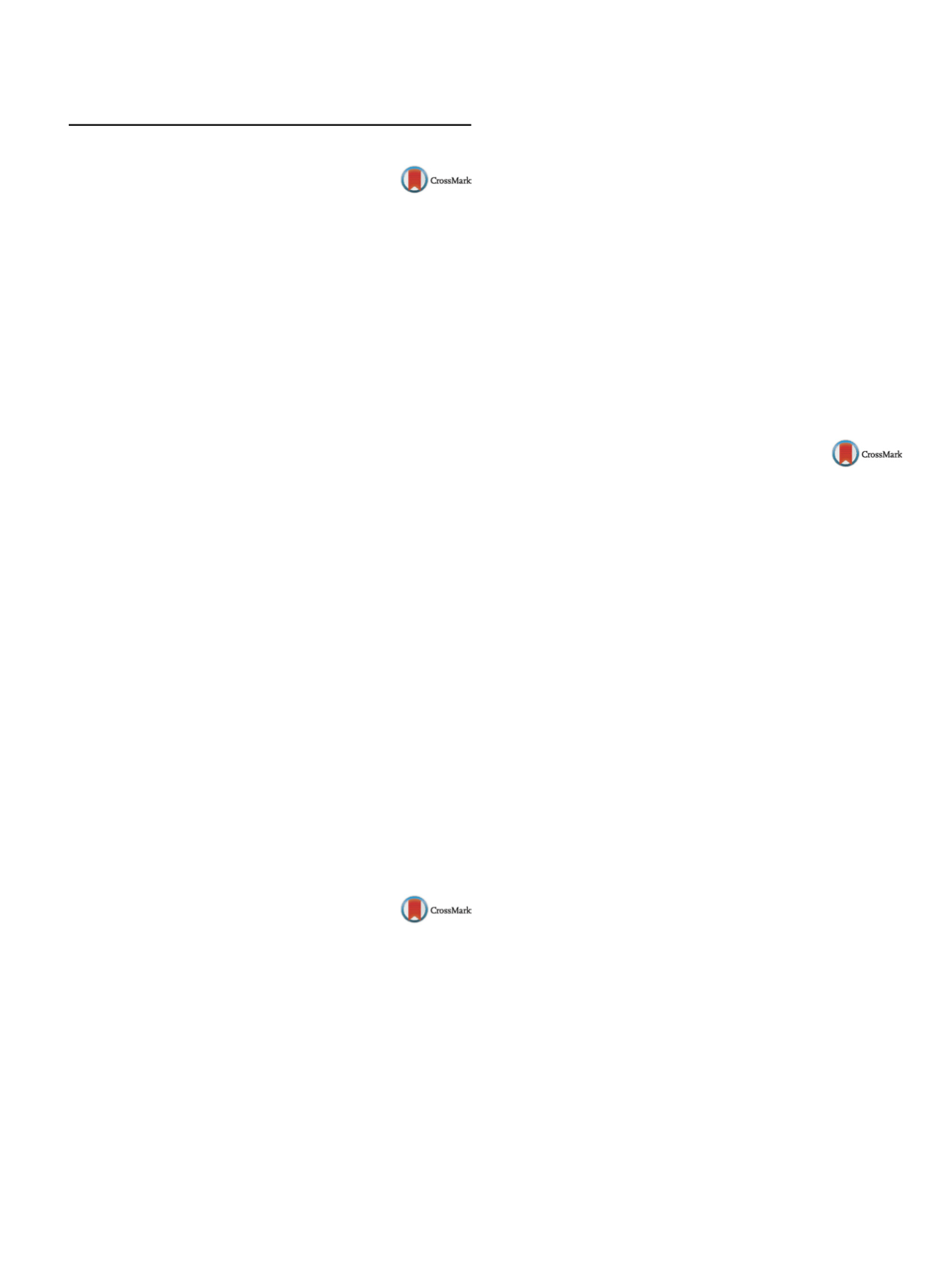

25th European Congress of Psychiatry / European Psychiatry 41S (2017) S53–S68
S59
Workshop: brain changes in early onset psychosis
W020
Structural brain abnormalities in
early onset psychosis: results from the
norment eop cohort
V. Lonning
1 ,∗
, S. Nerland
2, R.E. Smelror
2, T.P. Gurholt
1,
I. Agartz
21
University of Oslo, Norment part Uio, oslo, Norway
2
Norment and K.G. Jebsen centre for psychosis research- institute of
clinical medicine- university of Oslo, department of psychiatric
research- diakonhjemmet hospital, Oslo, Norway
∗
Corresponding author.
Introduction
Cortical brain abnormalities are frequently
observed in adults with psychotic disorders, but few studies
have investigated adolescents with early-onset psychosis (EOP).
A previous magnetic resonance imaging (MRI) study from the
NORMENT group in Norway, found widespread cortical thinning
and smaller subcortical volumes in adult patients with psy-
chotic disorders, particularly schizophrenia, compared to healthy
controls.
Methods
Participants from the ongoing NORMENT adolescent
EOP-study, 30 patients (age: 13.3–18.3 years, mean age: 16.5, 66%
female) and 45 healthy adolescents (age: 13.6–18.8 years, mean
age: 16.2, 58% female), underwent 3 T MRI on the same scan-
ner. Surface-based morphometric analyses were performed using
FreeSurfer version 5.3.0. Group differences in vertex-wise corti-
cal volume, thickness and surface area were investigated by fitting
general linear models at each vertex on the surface. Age, sex and
group were entered as covariates, and a non-parametric cluster-
wise correction method for multiple comparisons was applied and
cluster-forming and cluster-wise threshold set at 0.05.
Results
Preliminary results show thinner cortex in the left medial
frontal lobe and smaller surface area in the left temporoparietal
junction in EOP patients compared to healthy controls after correc-
tion for multiple comparisons.
Conclusion
Surface-based analysis is sensitive to alterations in
cortical morphology in an adolescent EOP sample. The regions
exhibiting reduced cortical thickness and area in EOP overlap with
findings in an adult psychosis sample. Large-scale studies are warr-
anted to better identify the pattern of abnormalities and clarify
effects of age, diagnosis and medication.
Disclosure of interest
The authors have not supplied their decla-
ration of competing interest.
http://dx.doi.org/10.1016/j.eurpsy.2017.01.043W021
Frontostriatal dysconnectivity in
adolescent onset schizophrenia and
its associations with cognition: An
MRI volumetric and diffusion tensor
imaging study
A. James
1 ,∗
, H.M. Fernandes
2, P. Alves Da Mota
2, M. Hough
31
Oxford University, Psychiatry, Oxford, United Kingdom
2
Aarhus University, Department of Clinical Medicine, Center for
Music In the Brain, Aarhus, Denmark
3
University of Oxford, FMRIB, Oxford, United Kingdom
∗
Corresponding author.
Background
Adolescent-onset schizophrenia (AOS) is associated
with cognitive impairment and poor clinical outcome. Cogni-
tive dysfunction is thought to reflect functional dysconnectivity
between the frontal cortex and the striatum, Previous work
[1] has
shown frontostriatal dysconnectivity in large WM tracts explain
core cognitive deficits, with processing speed, which is affected by
alterations in WM connectivity, being an intermediary variable.
Objective
To undertake a follow-upMRI study using whole-brain
structural connectomics to track topological changes in the follow-
up (1st episode versus follow-up), in order to characterize the early
stages (evolution of the first two years) of the disorder.
Design
A follow-up study of 25 AOS subjects and 25 age and sex-
matched healthy subjects.
Outcome
Network theory will be applied to identify topological
alterations in structural networks, including frontostriatal white
matter (WM) tracts in relation to cognition and outcome measures.
Disclosure of interest
The authors have not supplied their decla-
ration of competing interest.
Reference
[1] James A, Joyce E, Lunn D, Hough M, Kenny L, Ghataorhe P,
et al. Abnormal frontostriatal connectivity in adolescent-onset
schizophrenia and its relationship to cognitive functioning. Eur
Psychiatry 2016;35:32–8.
http://dx.doi.org/10.1016/j.eurpsy.2017.01.044W022
Auditory cortex characteristics in
early onset psychosis and its
associations with auditory
hallucinations: A structural MRI Study
R.E. Smelror
1, V. Lonning
1 ,∗
, L. Mørch-Johnsen
1, S. Nerland
1,
T. Gurholt
2, I. Agartz
11
NORMENT and K.G. Jebsen Centre for Psychosis Research, Institute
of Clinical Medicine, University of Oslo, Department of Psychiatric
Research, Diakonhjemmet Hospital, Oslo, Norway
2
NORMENT and K.G. Jebsen Centre for Psychosis Research, Institute
of Clinical Medicine, Faculty of Medicine, University of Oslo, Oslo,
Norway
∗
Corresponding author.
Introduction
Smaller auditory cortex volume in schizophre-
nia patients with auditory hallucinations (AH) may be a result
of reduced cortical surface area and/or cortical thickness. A
neuro–imaging study from our group demonstrated that adult
schizophrenia spectrum patients with AH had significantly thinner
cortex in the left side Heschl’s gyrus (HG), compared to patients
without AH, and healthy controls (HC).
Objectives
This study aims to investigate if adolescents with
early-onset psychosis (EOP) and AH demonstrate thinner cortices
in HG, as found in Mørch-Johnsen et al. in 2016, compared to EOP
patients without AH, and HC.
Methods
EOP patients (schizophrenia spectrum, psychotic disor-
der not otherwise specified) (
n
= 29) underwent MRI. Mean volume,
cortical thickness and surface area in auditory cortex regions (HG,
superior temporal gyrus [STG]) were compared between patients
with AH (
n
= 20) and without AH (
n
= 9), measured with item P3
from the Positive And Negative Syndrome Scale (PANSS), and 48
HC.
Results
Preliminary results show no significant differences
between patients with and without AH and HC in mean volume,
cortical thickness, or surface area in HG or STG. There were no
significant side differences across hemispheres for these structures.
Conclusions
AH in EOP were not related to smaller volume, thin-
ner cortex or reduced surface area in auditory cortex regions. To
overcome the limitation of having a relatively small sample size,
the sample will be expanded with other EOP cohorts. Investiga-
tions into HG structure variation in relation to AH in EOP will also
be conducted.
Disclosure of interest
The authors have not supplied their decla-
ration of competing interest.
http://dx.doi.org/10.1016/j.eurpsy.2017.01.045

















